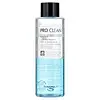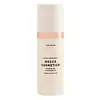What's inside
What's inside
 Key Ingredients
Key Ingredients

 Benefits
Benefits

 Concerns
Concerns

 Ingredients Side-by-side
Ingredients Side-by-side

Water
Skin ConditioningCyclopentasiloxane
EmollientDipropylene Glycol
HumectantMacadamia Integrifolia Seed Oil
Skin ConditioningHelianthus Annuus Seed Oil
EmollientArgania Spinosa Kernel Oil
EmollientPersea Gratissima Oil
Skin ConditioningOlea Europaea Fruit Oil
MaskingSimmondsia Chinensis Seed Oil
EmollientPrunus Amygdalus Dulcis Oil
Skin ConditioningSodium Citrate
BufferingSodium Chloride
MaskingCaprylyl/Capryl Glucoside
CleansingLauryl Methyl Gluceth-10 Hydroxypropyldimonium Chloride
Citric Acid
BufferingTocopheryl Acetate
AntioxidantDisodium EDTA
Ethylhexyl Methoxycinnamate
UV AbsorberLauryl Betaine
CleansingCI 42090
Cosmetic ColorantParfum
MaskingPhenoxyethanol
PreservativeWater, Cyclopentasiloxane, Dipropylene Glycol, Macadamia Integrifolia Seed Oil, Helianthus Annuus Seed Oil, Argania Spinosa Kernel Oil, Persea Gratissima Oil, Olea Europaea Fruit Oil, Simmondsia Chinensis Seed Oil, Prunus Amygdalus Dulcis Oil, Sodium Citrate, Sodium Chloride, Caprylyl/Capryl Glucoside, Lauryl Methyl Gluceth-10 Hydroxypropyldimonium Chloride, Citric Acid, Tocopheryl Acetate, Disodium EDTA, Ethylhexyl Methoxycinnamate, Lauryl Betaine, CI 42090, Parfum, Phenoxyethanol
Helianthus Annuus Seed Oil
EmollientVitis Vinifera Seed Oil
EmollientDicaprylyl Carbonate
EmollientPolyglyceryl-2 Sesquioleate
EmulsifyingPolyglyceryl-2 Caprate
EmulsifyingPersea Gratissima Oil
Skin ConditioningMacadamia Integrifolia Seed Oil
Skin ConditioningCannabis Sativa Seed Oil
EmollientOpuntia Ficus-Indica Seed Oil
EmollientRubus Idaeus Seed Oil
EmollientCitrus Aurantium Flower Oil
PerfumingTocopheryl Acetate
AntioxidantSimmondsia Chinensis Seed Oil
EmollientCitrus Aurantium Dulcis Peel Oil
MaskingArgania Spinosa Kernel Oil
EmollientPunica Granatum Seed Oil
EmollientCallitris Intratropica Wood Oil
MaskingHelianthus Annuus Seed Oil, Vitis Vinifera Seed Oil, Dicaprylyl Carbonate, Polyglyceryl-2 Sesquioleate, Polyglyceryl-2 Caprate, Persea Gratissima Oil, Macadamia Integrifolia Seed Oil, Cannabis Sativa Seed Oil, Opuntia Ficus-Indica Seed Oil, Rubus Idaeus Seed Oil, Citrus Aurantium Flower Oil, Tocopheryl Acetate, Simmondsia Chinensis Seed Oil, Citrus Aurantium Dulcis Peel Oil, Argania Spinosa Kernel Oil, Punica Granatum Seed Oil, Callitris Intratropica Wood Oil
Ingredients Explained
These ingredients are found in both products.
Ingredients higher up in an ingredient list are typically present in a larger amount.
You may know this ingredient as argan oil. Argan Oil has antioxidant, hydrating, and soothing properties.
Studies have shown argan oil can help fight again radical damage from the sun. This makes it effective at preventing hyperpigmentation.
Large amounts of vitamin E found in argan oil helps the skin retain water. Argan oil also contains fatty acids such as linoleic acid, oleic acid, and palmitic acid. It is also a good source of lipids.
Another benefit of argan oil is skin-soothing. It can help reduce inflammation-related skin symptoms.
Argan Oil is effective at regulating sebum production in pores. This can make it effective at treating hormonal acne.
Traditionally, argan oil was used for its antibacterial and antifungal properties. However, argan oil contains fatty acids that may make it not fungal-acne safe.
Argan Trees are native to Morocco.
Learn more about Argania Spinosa Kernel OilHelianthus Annuus Seed Oil is the oil derived from the seeds of a Sunflower. Sunflower seed oil is non-fragrant. It is an emollient, meaning it helps to soften the skin.
Sunflower seed oil contains many fatty acids. The fatty acids found in sunflower seeds include (from highest amount to least): linoleic acid, myristic acid, palmitic acid, stearic acid, arachidic acid, oleic acid, and linolenic acid.
These fatty acids help the skin create ceramides. Ceramides play a role in repairing the skin barrier.
Helianthus Annuus Seed Oil helps moisturize the skin. This in turn helps the skin look more rejuvenated and smoother.
Sunflowers are rich in vitamin E.
Historians believe Indigenous cultures of North America domesticated sunflowers before corn. Thus they relied on sunflower oil for a variety of uses. One such use is moisturizing skin and hair.
Sunflower seed oil may not be fungal acne safe. We recommend speaking with a professional if you have any concerns.
Learn more about Helianthus Annuus Seed OilMacadamia Seed oil is an emollient. It is rich in fatty acids: oleic, linoleic, and palmitoleic.
An an emollient, macadamia seed oil helps hydrate the skin by creating a thin film on top. This film prevents moisture from evaporating.
Due to the fatty acid content of this ingredient, it may not be Malassezia folliculitis safe.
Learn more about Macadamia Integrifolia Seed OilPersea Gratissima Oil is also known as avocado oil.
Avocado Oil has antioxidant properties. It is mostly made up of the glycerides of fatty acids. About 67% of these fatty acids is made up of oleic acid. Palmitic acid and linoleic acid are also present.
These fatty acids help hydrate and soften the skin. It may increase collagen content in the skin. Collagen helps keep your skin plump and firm. This ingredient helps reduce inflammation and has not shown to clog pores.
This ingredient may not be fungal-acne safe due to its high fatty acid content.
Avocados also have B vitamins, vitamin K, vitamin C, vitamin E, and potassium.
Learn more about Persea Gratissima OilThis oil comes from the seeds of the desert shrub called Jojoba. It is more commonly known as jojoba oil, a non-comedogenic oil.
Jojoba oil does not contain fragrance and has many fatty-acids, making it a great soothing ingredient.
It also contains Vitamin E, a great moisturizing ingredient. Vitamin E is also an antioxidant and protects your skin against oxidative damage.
This ingredient humectant properties, meaning it helps draw moisture from the air. This helps keep your skin hydrated.
While jojoba has antibacterial properties, it is only able to kill some strains of bacteria.
Studies also show it helps in wound healing. In fact, Indigenous cultures have used jojoba as a moisturizer and to help treat burns for centuries.
Fun fact: Jojoba oil similar to natural human skin sebum, so it has a great effect on dry skin. It is also promising with helping to regulate sebum production.
Due to its fatty acid content, Jojoba oil may not be fungal acne safe. We recommend speaking with a professional if you have any concerns.
Learn more about Simmondsia Chinensis Seed OilTocopheryl Acetate is AKA Vitamin E. It is an antioxidant and protects your skin from free radicals. Free radicals damage the skin by breaking down collagen.
One study found using Tocopheryl Acetate with Vitamin C decreased the number of sunburned cells.
Tocopheryl Acetate is commonly found in both skincare and dietary supplements.
Learn more about Tocopheryl Acetate